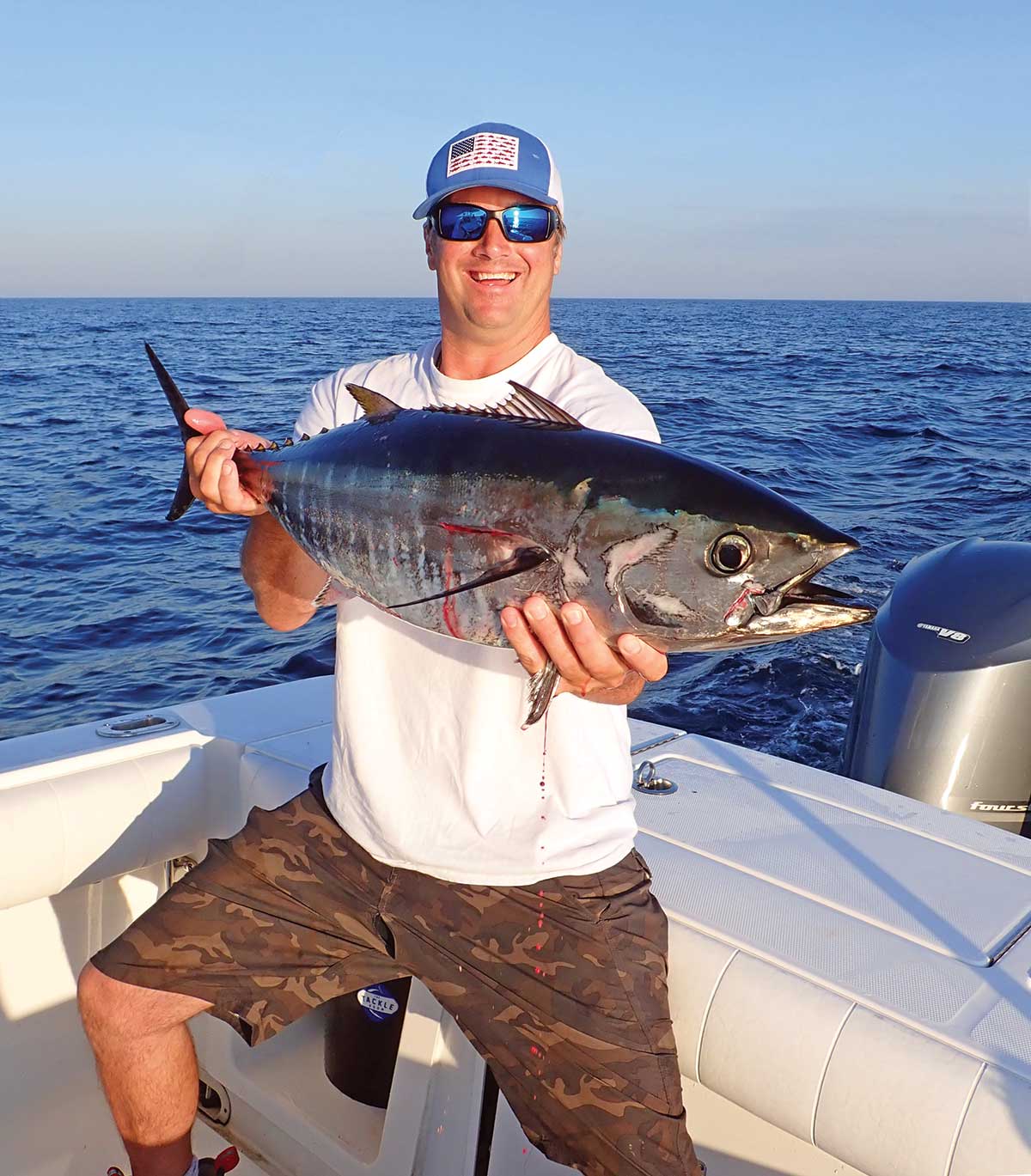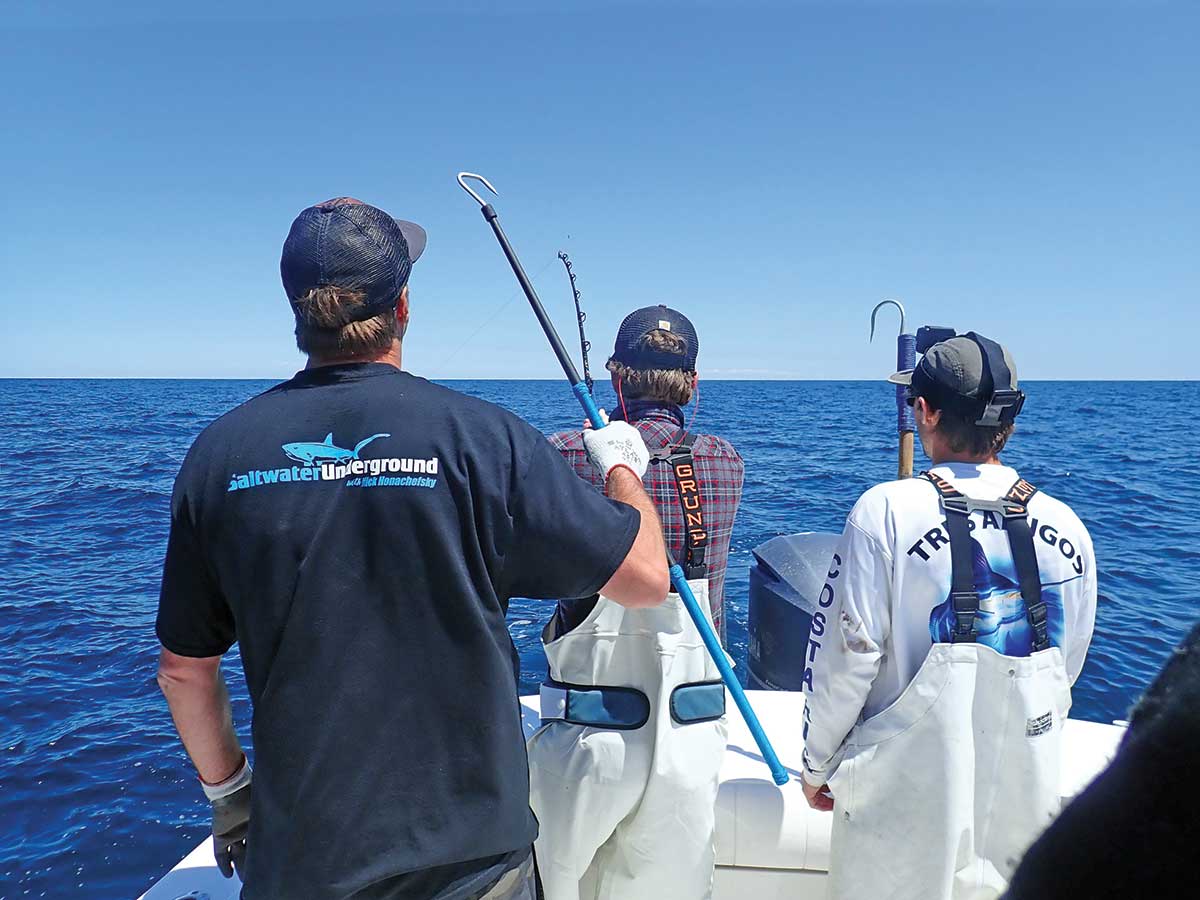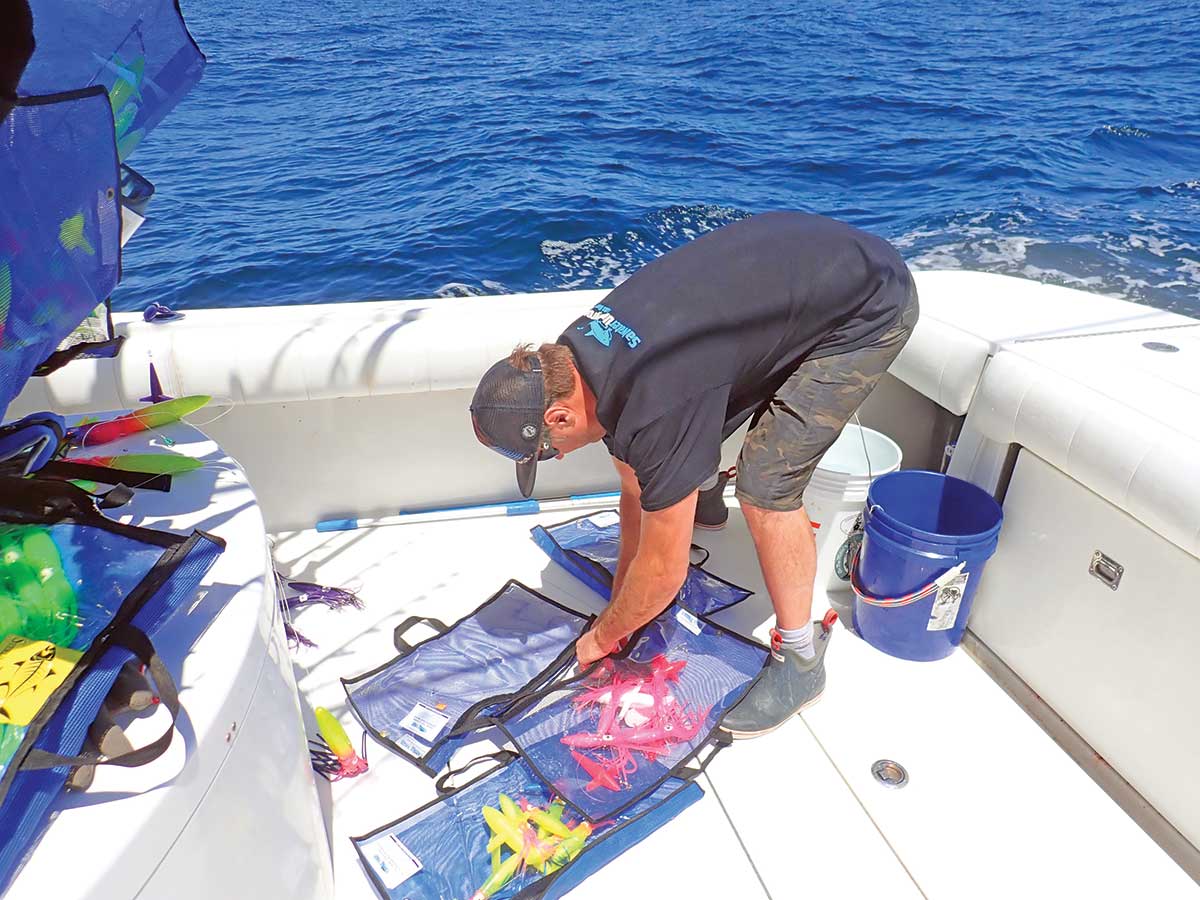By spin, jig or troll, the “BFT” action is underway not far from port.
The sound itself haunts me at night, startling me into a twitchy wake up in cold sweats of anticipation. Nothing, and I mean nothing, compares to being on the midshore grounds with the warm glow of the pre-dawn morning sun illuminating the bluewater when the sound of the first reel zips off – bluefin!!!
The preparation building up to what happens at that moment can be a make or break type of situation, depending on how well you planned it out. Here’s a solid start to get your gameplan straight for the Jersey Shore bluefin tuna season during the early summer sessions.

Smart Charts
Research your spots. Study the satellite images, chlorophyll charts, altimetry and water temp for eddy spin offs through Buoyweather, Roffer’s, Offshore Satellite Services and the like. Plan your trip around the knowledge to predict where fish are i.e. temperature breaks and clarity of water. A tight circle of trusted friends also helps on the water on the SAT phone or a specified predetermined channel on the radio.
Plan your target area gameplan ahead of time and have three backup spots within 10 to 15 miles to bump to if the bite is sour at your initial spot. A solid lead list to start includes such perennial favorites such as the Triple Wrecks, Atlantic Princess, Bacardi, Texas Tower, Chicken Canyon, and Barnegat Ridge to the north, or the tasty South Jersey locations like the Hambone, Hot Dog, Lobster Claw and Chickenbone.
When deciding where to go, be sure to have a full tank of gas the day before and know how much fuel you’re going to burn, how many miles you plan to run, plus bring extra fuel if needed in a bladder tank.
Proper Muscle
There’s a time and place for fooling around with tuna on lighter tackle, but for bluefin trolling, don’t be undergunned. Stand up 50- to 100-pound class rods like the PENN Tuna Stick TS5010ARA56or Shimano Tallus TLCSTH2SSBLA matched with PENN International 50VSW or Shimano Tiagra TI50WA 50 wide reels are proper guns to bring to the fight. Spool up with 80-pound Quattro or Hi-Seas line and implement a 300- to 500-pound Sampo Coastlock BX8CZ snap to lock on the trolled offerings.
A wide variety of trolling presentations can help cover any situation you may find yourself in depending on what the BFT are feeding on and honing in on. Nothing is more frustrating than marking fish and dragging squid spreaders when they are eating rainfish. For trolling, ammo up with Sterling wide trackers, Chatter Lures sidetracker squid Spreader Bars, Williamson Tuna Catchers, Green Machines, Joe Shute skirts, Ilanders, Ballyhoo, Daisy Chains, Birds, Cedar Plugs with major colors being black/purple, zucchini, rainbow, blue/white.

If popping or jigging, there’s a wide selection of lightweight tuna rods rated for 50- to 200-pound battles such as the Shimano Terez TZS78HBLK and Jigging World Ghost Hunter GHC56. Match it with a high speed, heavy duty reel that can handle the job like a Shimano Sustain 20000, Talica 20 or likewise reel with enough drag setting to 25 pounds to put pressure and complete the end game if needed.
Jigging and popping lures in a wide array of sizes and shapes can be as follows: Shimano Orca FB stickbaits, Williamson Surface Pro, Yo-Zuri Bull Popper, Williamson Benthos 3.5- to7-ounce jigs, Stingo jigs, RonZ 4x rubber baits, Hogy Harness jigs, and Shimano Butterfly jigs. Continually adapt to what you are seeing form the tuna. If they are on a surface bite, pull the trolling rods in and break out the poppers. If they are marking deeper, start dropping jigs down. If there are no real identifiers, then keep dragging those troll spreads until you find an area they are holding in.
Know Your Role
Nothing is more frustrating than when a line goes zipping off and the first words you hear are, “You grab it,” then, “No you can have it man!” Get that stuff sorted out before you even put a line in. Know beforehand who gets the rod first, then next on down the line for each bite. Then decide whose role it is to be gaff man, leader man, captain to steer the boat and who can jump between duties when needed. There’s absolutely no reason for confusion when a line or multiple lines go off. You put all the time, effort and money into targeting tuna and most times a crew loses fish because there is confusion. Knock it all out beforehand for a streamlined experience.
Most importantly, when heading midshore or offshore, know your capabilities when leaving dock. Understand your boat size, the weather forecast, which wave heights and winds are safe for the vessel you are heading out in, as well as the crew you have with you. This isn’t fluke fishing and things can get borderline hectic upon dangerous if not fully aware and prepared. Line up all your ducks in a row and there’s no reason you can’t have a successful bluefin tuna season this summer.

Essential Forget Me Nots
Many times in a pinch you need certain gear to make or break your trip. Busted lines, snapped bars, a bad gaff and measuring a tuna for immediate release or the fish box can be split second decisions. Don’t get caught with your slicks down. Here are a few must-haves on any tuna sortie:
- Proper rigging tools like crimps, crimper, ballyhoo rig, and dental floss
- Minimum two gaffs with wide 4- to 6-inch gaps, larger 6-foot gaffs and smaller 4-foot gaffs to help pull a fish on deck
- Tape measure
- Assortment of 30- to 300-pound monofilament and fluorocarbon leader for shock leaders and to respool if needed
- Spools of extra 50- to 80-pound braided line
- Bubba Blade or Dexter Russell knives to bleed out fish
- Loads and loads of ice filled to the brim
- Tuna coffin bag
- Ziploc freezer bags
- Leadering gloves
- Camera
GPS numbers below are courtesy of Captain Segull’s offshore charts, as well as public submissions via Navionics.
Atlantic Princess 39 49.285’ / 73 06.774’
Bacardi 39 52.900’ / 72 38.750’
Texas Tower 39 48.900’ / 72 40.150’
Chicken Canyon 39 47.200’ / 72 59.100’
Triple Wrecks 39 36.250’ / 73 01.434’
Lobster Claw 38 50.425’ / 73 34.880’
Hambone 38 12.000’ / 74 25.000’
Hot Dog 38 06.541’ / 74 17.117’
Chickenbone 38 14.200’ / 74 26.590’
Of course, don’t forget your Highly Migratory Species (HMS) permit. All owners/operators of vessels in the U.S. Atlantic Ocean, Gulf of Mexico, and Caribbean must obtain a federal permit to recreationally fish for regulated Atlantic HMS species including bluefin tuna. The Atlantic HMS Angling Permit costs $26 and covers your boat through the end of the season. Order permits online at hmspermits.noaa.gov.
As of May 2 (and barring any later action), the new retention limits on bluefin for private vessels with the HMS angling permit are two school bluefin from 27 to less than 47 inches, and one large school/small medium at 47 to less than 73 inches. Charter boats are allowed three school bluefin and one large school/small medium, while the headboats may retain six school bluefin for their customers, and two of the large school/small medium class.
